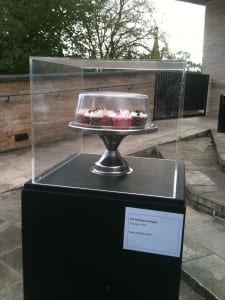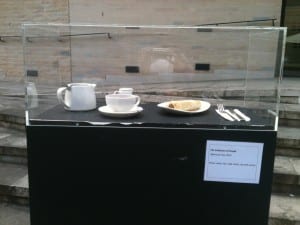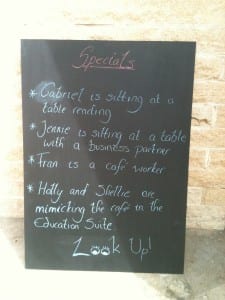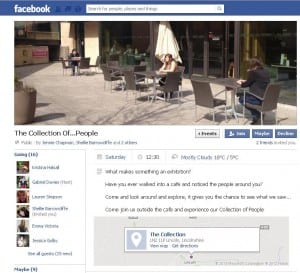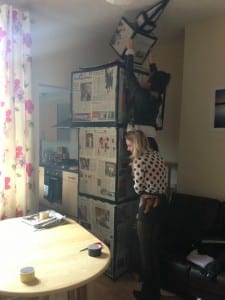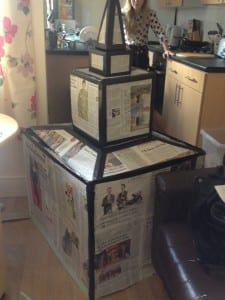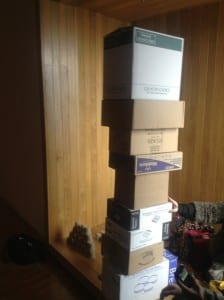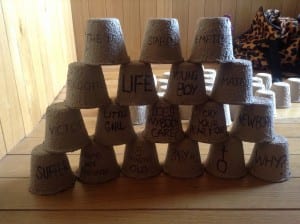The initial ideas didn’t all work but it was nice to experiment with them. The chalk down the stairs was tested but didn’t look as professional as we had hoped and you couldn’t really read what was said, to have taken this further it would have required using a different type of lettering. The picture idea also didn’t make it into our final exhibition, not because it wasn’t a good idea but because it didn’t really fit with everything else in the final piece.
Our final exhibition included:
- Having only two people sat talking to themselves outside instead of three, three people was just too much and two people proved as much of a point as three.
- We had the third person on a platform portraying our opinion of a café worker, she would greet at random times, directing this speech to no one in particular.
- We still included the idea of the education room but at the last minute we moved its position because we felt like it would be better framed and could be seen by a wider audience, some of who wouldn’t know why we were up there.
- A chalk board, explaining who each person was and what it was that they were doing – this was a way to introduce our piece and make it a little clearer, it also links back to the café because it was similar to that of a specials board that was inside the café at The Collection.
- We want to hopefully frame one of the windows so that if you’re looking from the outside then it encourages you to look inside the café and have a proper look.
- As well as these ideas we have a few that we can only really try out on the day, they are not really to key to our piece but do help set the scene. This is having a tea set and a cake stand each in their own little plinths so they become part of the exhibit with a placard similar to that which you see in The Collection galleries.
Our piece could all go wrong on the day but I think this adds to the excitement a little. We have secured the use of some of The Collections items such as the plinths, a platform which I need to go and paint and also some things that help us to block the public from going any further forward. I think we have done everything we can to prepare for the day, let’s just hope it doesn’t rain otherwise some people might get a little bit wet as when we decided to take it outside we agreed that if it was to rain on the day that it would still go ahead as planned.
